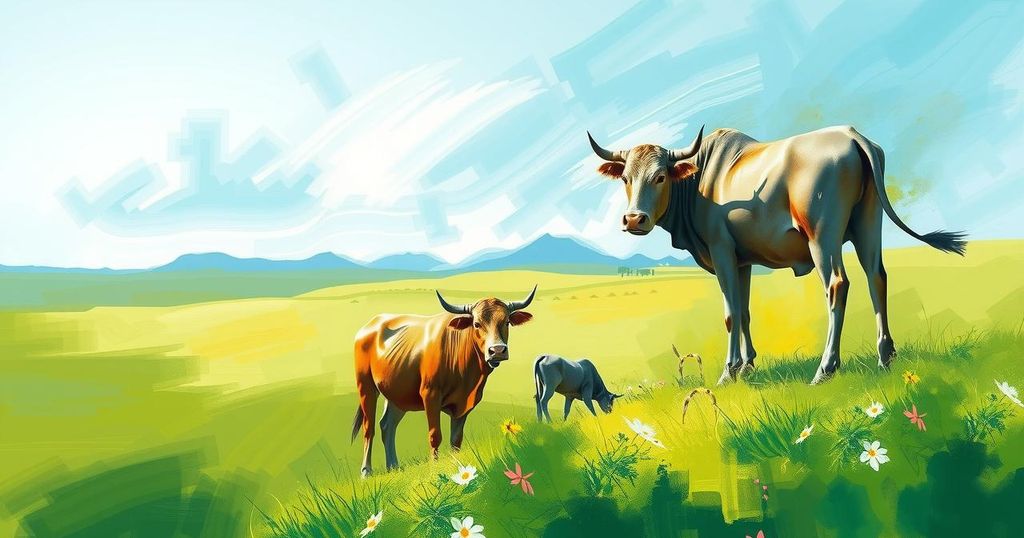Decline of India’s Ongole Cattle Amid Brazilian Success
India’s Ongole cattle breed is in decline domestically, with only 634,000 remaining in 2019. In contrast, Brazil has embraced this breed, with 80% of its cattle being Ongoles, leading to record sales such as Viatina-19 at $4.38 million. Factors such as mechanization and a preference for higher-yielding crossbreds contribute to the decline in India, despite government efforts to promote indigenous breeds.
India’s indigenous Ongole cattle breed is experiencing a significant decline in domestic numbers while thriving in Brazil, where it has attained a prestigious status. According to a report from The Indian Express, approximately 80 percent of Brazil’s 226 million cattle are Ongoles, primarily bred for beef, leading to remarkable sales such as a purebred named Viatina-19, which fetched $4.38 million in February 2025.
In stark contrast, Ongole cattle in India have decreased dramatically, with only 634,000 remaining in 2019 compared to 1.5 million in 1944. Despite government conservation efforts, the indigenous cattle population has declined by 9 percent from 2007 to 2012 and an additional 6 percent from 2012 to 2019. During the same period, exotic and crossbred cattle populations increased by nearly 30 percent.
Farmers in India often favor crossbred cows due to their superior milk production, despite government schemes like the Rashtriya Gokul Mission aiming to promote indigenous breeds. The discrepancy in market price is notable: an Ongole cow in India is valued at approximately Rs 1 lakh, while prized bulls can command Rs 10-15 lakh, significantly lower than their Brazilian counterparts.
Ongole cattle, or Ongolu Gitta, are indigenous to the Prakasam District of Andhra Pradesh. This breed has deep cultural and historical significance in India, distinguished by its heat tolerance, disease resilience, and ability to thrive on minimal fodder, making them well-suited to Indian agricultural conditions.
The export of Ongole bulls to Latin America began as early as 1885, prompted by smaller native breeds in the region. An estimated 7,000 Ongole cattle were exported, substantially influencing Brazil’s agricultural advancement.
The decline in the Ongole population in India can be attributed to a growing preference for crossbred cattle with higher milk yields, along with a reduction in demand for draught animals due to mechanization. Experts indicate that selective breeding for strength over milk production has also hindered the breed, as the traditional valuation of Ongole bulls for plowing has diminished.
Efforts to revive the Ongole population are being undertaken at Guntur’s LAM Farm, which utilizes advanced breeding techniques like IVF-embryo transfer to preserve the breed’s purity. However, challenges remain due to the decreasing demand for these cattle. Furthermore, India has imposed restrictions on cattle exports since the 1960s; attempts to lift this ban were met with opposition in 2023. In contrast, Brazil’s effective lineage tracking of cattle has fostered improvements in their Ongole population, a practice that could benefit Indian farms as well.
In summary, India’s Ongole cattle breed faces significant decline domestically while flourishing in Brazil, where it commands high market values. Despite conservation efforts, the indigenous population has sharply decreased, driven by a preference for crossbred cows and mechanization in farming. While advanced breeding techniques offer hope for reviving the breed, the need to adapt strategies similar to those employed in Brazil is crucial for the future of Ongole cattle in India.
Original Source: www.business-standard.com




Post Comment